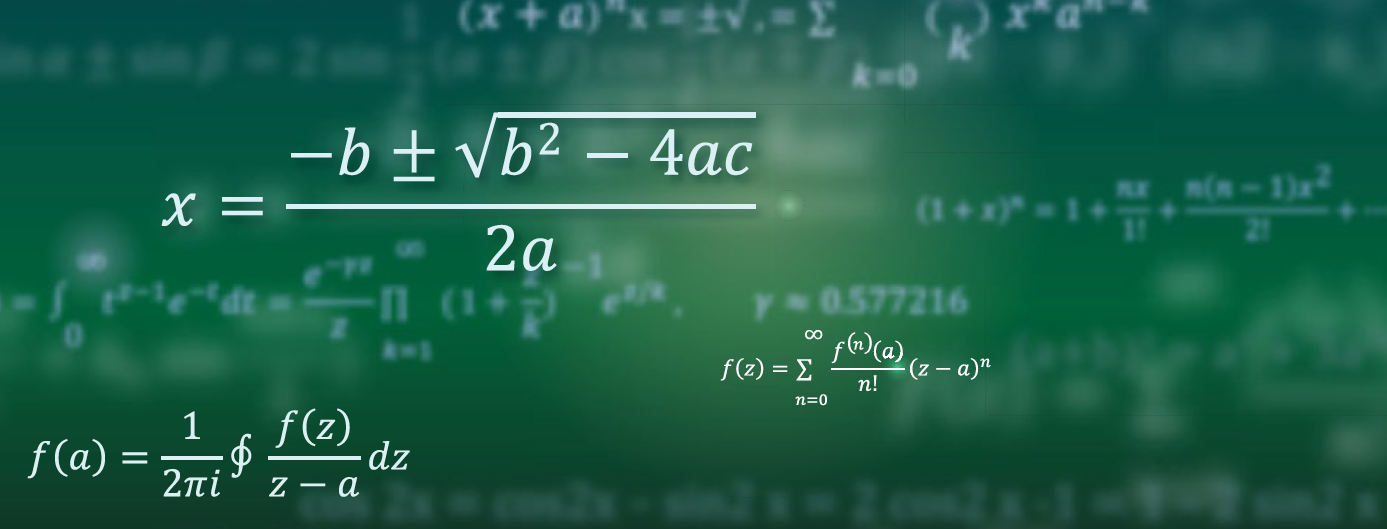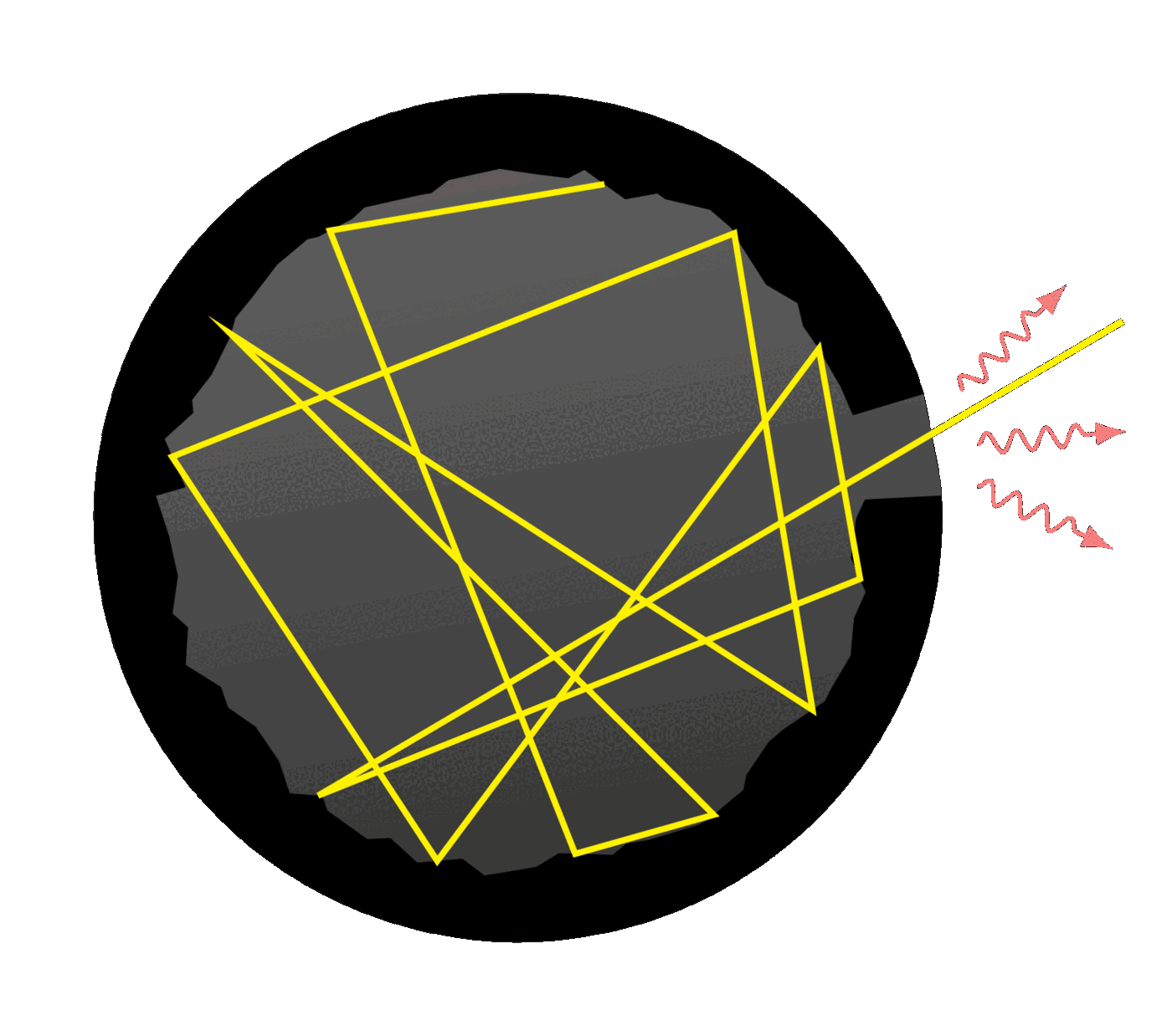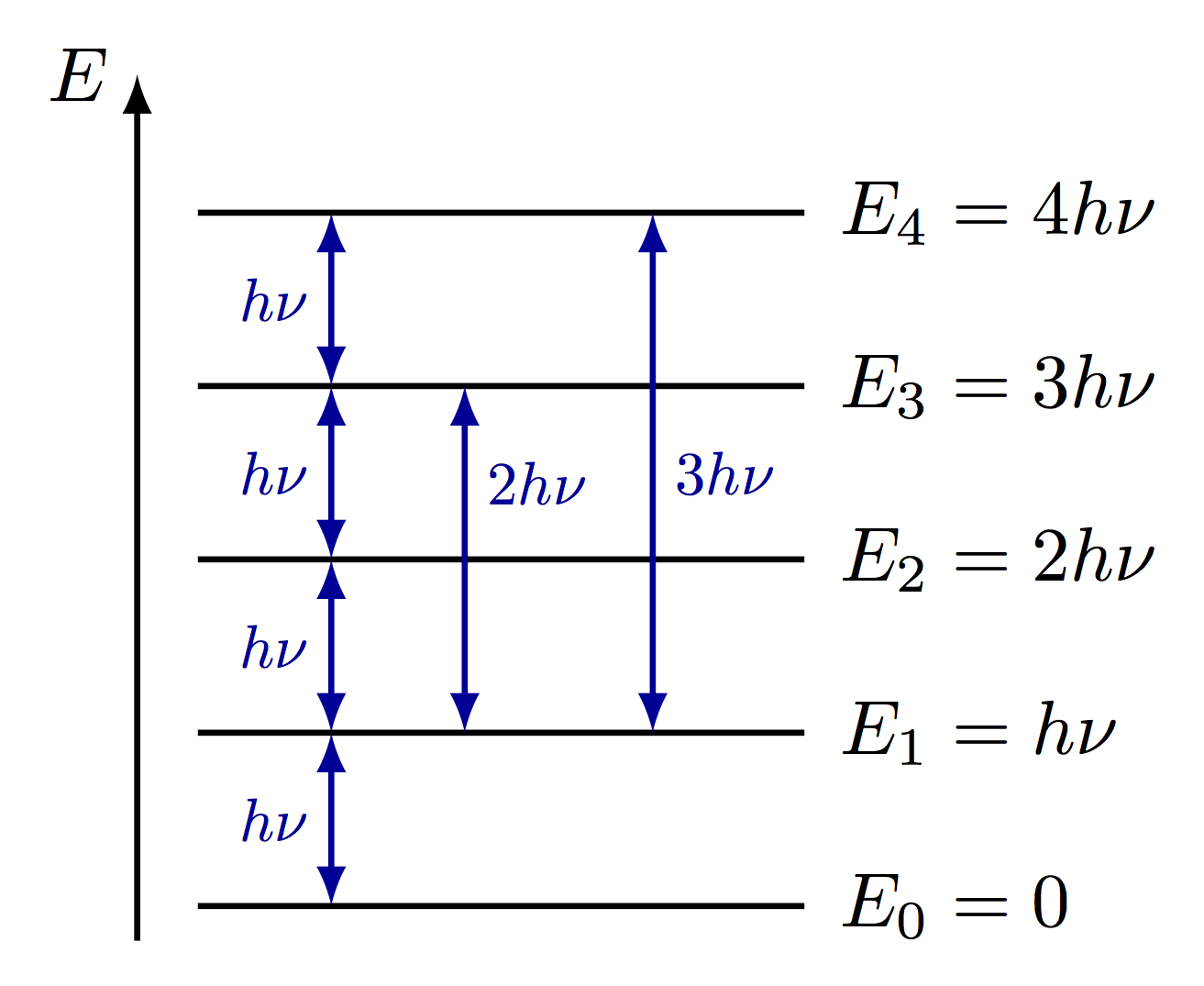Plot of black body formulas: Rayleigh-Jeans, Wien and Planck. Inspiration from Wikipedia.
Find other black body diagrams via the “black body” tag: black body color gradient, cavity model, Plank oscillators. For more figures related to thermodynamics, see the “thermodynamics” category.
Including Wien's displacement law:
Comparing black body colors in a log-log plot:
Comparing Planck to Rayleigh-Jeans & Wien in a log-log plot for T = 300 K:
For T = 3000 K:
Comparison for several temperatures:
Redshift of the cosmic microwave background (CMB) from 3000K to ~3K due to the expansion of the universe:
Small variations of the CMB temperature (note real variation are actually on the order of ΔT ~ 20 𝜇K after subtracting the dipole ΔT ~ 3 mK due to the Doppler effect of our motion relative to the CMB):
Edit and compile if you like:
% Author: Izaak Neutelings (March 2019)\documentclass[border=3pt,tikz]{standalone}\tikzset{>=latex} % for LaTeX arrow head\usepackage{pgfplots} % for the axis environment\pgfplotsset{compat=1.13, % TikZ coordinates <-> axes coordinates/pgf/number format/1000 sep={},legend image code/.code={\draw[mark repeat=2,mark phase=2]plot coordinates {(0cm,0cm) (0.22cm,0cm) (0.44cm,0cm)};%}}\usepackage{siunitx}% redraw axis on top\makeatletter \newcommand{\pgfplotsdrawaxis}{\pgfplots@draw@axis} \makeatother\pgfplotsset{axis line on top/.style={after end axis/.append code={\pgfplotsdrawaxis}}}% CUSTOM COLORS% See https://tikz.net/blackbody_color/\definecolor{1000K}{rgb}{1,0.0337,0}\definecolor{2000K}{rgb}{1,0.2647,0.0033}\definecolor{3000K}{rgb}{1,0.4870,0.1411}\definecolor{4000K}{rgb}{1,0.6636,0.3583}\definecolor{5000K}{rgb}{1,0.7992,0.6045}\definecolor{6000K}{rgb}{1,0.9019,0.8473}\definecolor{8000K}{rgb}{0.7874,0.8187,1}\definecolor{10000K}{rgb}{0.6268,0.7039,1}\pgfdeclareverticalshading{rainbow}{100bp}{color(0bp)=(red); color(25bp)=(red); color(35bp)=(yellow);color(45bp)=(green); color(55bp)=(cyan); color(65bp)=(blue);color(75bp)=(violet); color(100bp)=(violet)}\colorlet{myred}{red!70!black}\colorlet{mygreen}{green!70!black}\colorlet{mydarkgreen}{green!55!black}% PLANCK & RAYLEIGH-JEANS% 2hc^2/lambda^5 = 2 * 6.62607015e-34 * 299792458^2% = 1.191042972e-16
Click to download: blackbody_plots.tex • blackbody_plots.pdf
Open in Overleaf: blackbody_plots.tex

